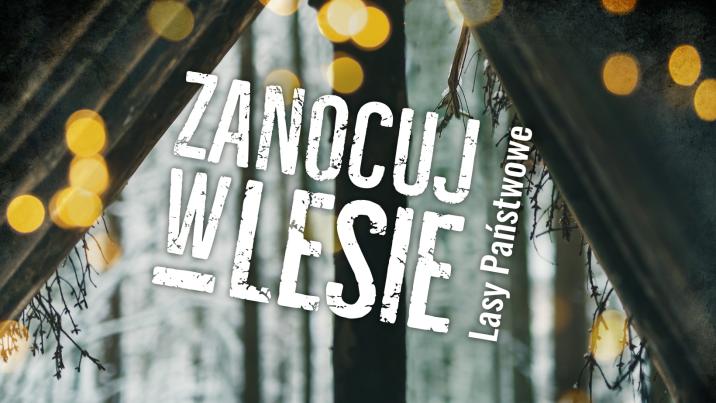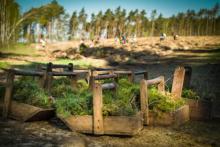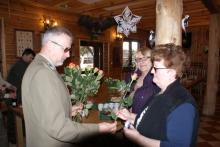 Asset Publisher
Asset Publisher
Polish forests
Poland is in the European lead, while concerning the area of all forests. They cover about 29,2 % of the country territory, and grow within the area of 9,1 million hectares. The overwhelming majority of the forests is state owned, of which almost 7,6 million hectares are managed by the State Forests National Forest Holding..
The number of Polish forest is still growing. The forestation rate of the country has increased from 21 % in 1945 to 29,2 % at the moment. Between 1995 and 2008, the forest area increased by 310 thousand ha. The basis for afforestation works is the "National Programme for Increasing the Forest Cover" (KPZL), assuming an increase of the forestation rate up to 30 % by 2020 and up to 33 % by 2050. Polish forests abound in flora, fauna and fungi. 65 % of the total number of animal species live there.
The forests grow in our country on poor soils, mainly because of the development of the agriculture in previous years. It influences the distribution of the types of the forest sites in Poland. Over 55 % of the forest areas is covered with coniferous forests. In other areas, there are forest sites, mainly the mixed ones. Their small part constitute alder and riparian forests – not more than 3 %.
In the years 1945 – 2011 the area of natural deciduous tree stands within the area of the State Forests National Forest Holding increased from 13 to 28,2 %.
Within the lowlands and uplands the most often occurring tee species is pine. It covers 64,3 % of the forest area of the State Forests National Forest Holding and 57,7 % of private and commune forests. In the mountains the predominant species is European spruce ( in the west) and European spruce with beech (in the east). Domination of pine is the result of carrying on sustainable forest management in the past. Once, the monocultures (crops or cultivations of one species) were the answer to the great demand of industry for wood. Such forests appeared to be quite fragile to climatic factors. They also were often the prey of pests' expansion.
In Polish forests, the share of other tree species, especially deciduous trees have been systematically increasing. The foresters have stepped aside from monocultures – that is why, they try to fit specific species of the forest stand to the natural stand, that would be proper for the given area. Thanks to that, in the years 1945 – 2011, the area of the deciduous tree stands within the lands of the State Forests National Forest Holding increased from 13 to 28,2 %. There occur more and more frequently the following tree species: oaks, ashes, maples, sycamore maples, elms, but also birches, beeches, alders, poplars, hornbeams, aspens, tilias and willows.
Our forests are the most often represented by the forest stands aged 40 to 80 years. The average age of the forest equals 60 years. More and more trees are of big size at the age over 80 years. Since the end of the Second World War, the forests' area has increased up to almost 1,85 million hectares.
Raport o stanie lasów w Polsce 2012
 Asset Publisher
Asset Publisher
Informacje na temat Zanocuj w Lesie
Informacje na temat Zanocuj w Lesie
Poniżej garść informacji o programie "Zanocuj w lesie"
Nadleśnictwo Dąbrowa wyznacza specjalny obszar przeznaczony dla miłośników bushcraftu i survivalu, ale też dla wszystkich ludzi którzy chcą przenocować w lesie "na dziko" bez specjalnej infrastruktury, w ramach ogólnopolskiego projektu "Zanocuj w Lesie".
Zachęcamy wszystkich do aktywnego udziału w ramach programu "Zanocuj w lesie" po wcześniejszym zapoznaniem się z zasadami i regulaminem (dostępnym poniżej).

Nadleśnictwo Dąbrowa przystąpiło do programu "Zanocuj w lesie", który powstał w ramach założeń zawartych w ogólnopolskim pilotażu udostępnienia obszarów leśnych celem uprawiania aktywności typu bushcraft i survival. Po ponad rocznym okresie trwania pilotażu, ankietowaniu osób korzystających z obszarów pilotażowych, zarządców terenu, rozmowach ze środowiskiem bushcraftowym i survivalowym wykiłkował pomysł przekształcenia pilotażu w stały program pn. "Zanocuj w lesie". W naszym nadleśnictwie jest to obszarem programu udostępnione zostały tereny Leśnictwa Bedlenki i Gródek.
Nadleśnictwo Dąbrowa należy do jednego z 46, które w 2019 roku przystąpiły do pilotażu obszarów przeznaczonych do uprawiania bushcraftu i survivalu. Od 2021 roku stajemy się miejscem kolejnego badania pilotażowego jakim jest dopuszczenie gotowania na kuchenkach gazowych.
Wszystko co w danym obszarze jest do zobaczenia oraz sam obszar dostępny na mapach Banku Danych o lasach - można również pobrać aplikacje na telefon (android) (iPhone) - z menu wybierz - mapy BDL - mapa zagospodarowania turystycznego.
Wybierając się na nocleg w wyznaczonym terenie pamiętajmy:
- jest to oferta wyłącznie dla osób indywidualnych. Pobyt do 9. osób i dwóch noclegów zwolniony jest z obowiązku zgłaszania. Miło byłoby jednak gdyby informacje o Państwa pobycie do nas docierały (w celu informowania Państwa o zaistniałych zagrożeniach). Planujesz zostać dłużej? Jest Was więcej? Musisz wysłać formularz Zgłoszenia i uzyskaż zgodę nadleśnictwa. Pamiętaj pracujemy od poniedziałku do piątku w godzinach 7:00-15:00. Przyślij nam formularz na 2 dni robocze przed rozpoczęciem biwakowania. Prośbę wyślij na adres monika.kwasniewska@torun.lasy.gov.pl
- szczegóły dotyczące programu są dostępne w Regulaminie korzystania z obszarów - zapoznaj się z nim.
- miejsce przeznaczone do rozpalenia ognia dostępne jest w Leśnictwe Bedlenki (mapa obszaru). Znajduje się tak też ogólnodostępne drewno na ognisko.
- zapoznaj się mapą okresowego zakazu wstępu do lasu. Przed wyjściem do lasu, sprawdź, czy obszar nie znajduje się na obszarze objętym zakazem,
- zapoznaj się z zasadami bezpiecznego korzystania z lasu,
- na terenie wyznaczonym prowadzi się planowe prace gospodarcze. Poniżej w zakładce dokumenty do pobrania znajduje się aktualna lista lokalizacji wyłączonych czasowo z programu. Zakaz wstępu oznaczają żółte tablice ostrzegawcze ustawione w terenie, na drogach i szlakach w rejonie prac- TAM NIE NOCUJEMY,
- koła łowieckie na wyznaczonym terenie wykonują polowania (w okresie jesienno-zimowym zbiorowe). Prosimy o zapoznanie się z terminami polowań zbiorowych, które koła łowieckie mają obowiązek podawać do wiadomości gmin. Na obszar w którym się odbywa się polowanie, obowiązuje zakaz wstępu!
- w lesie występują też miejsca objęte stałym zakazem wstępu (zgodnie z ustawą o lasach), m.in. uprawy leśne do 4 m, ostoje zwierzyny, drzewostany nasienne, co zawsze należy mieć na względzie podczas planowania leśnych wędrówek.
- unikajmy miejsc, gdzie występuje dużo suchych drzew- to realne zagrożenie dla naszego zdrowia i życia. Nie rozbijaj swojego obozwiska obok urządzeń łowieckich.
Nadleśnictwo Dąbrowa staje się miejscem kolejnego badania pilotażowego i przez rok będzie mozna korzystać z turystycznych kuchenek gazowych.
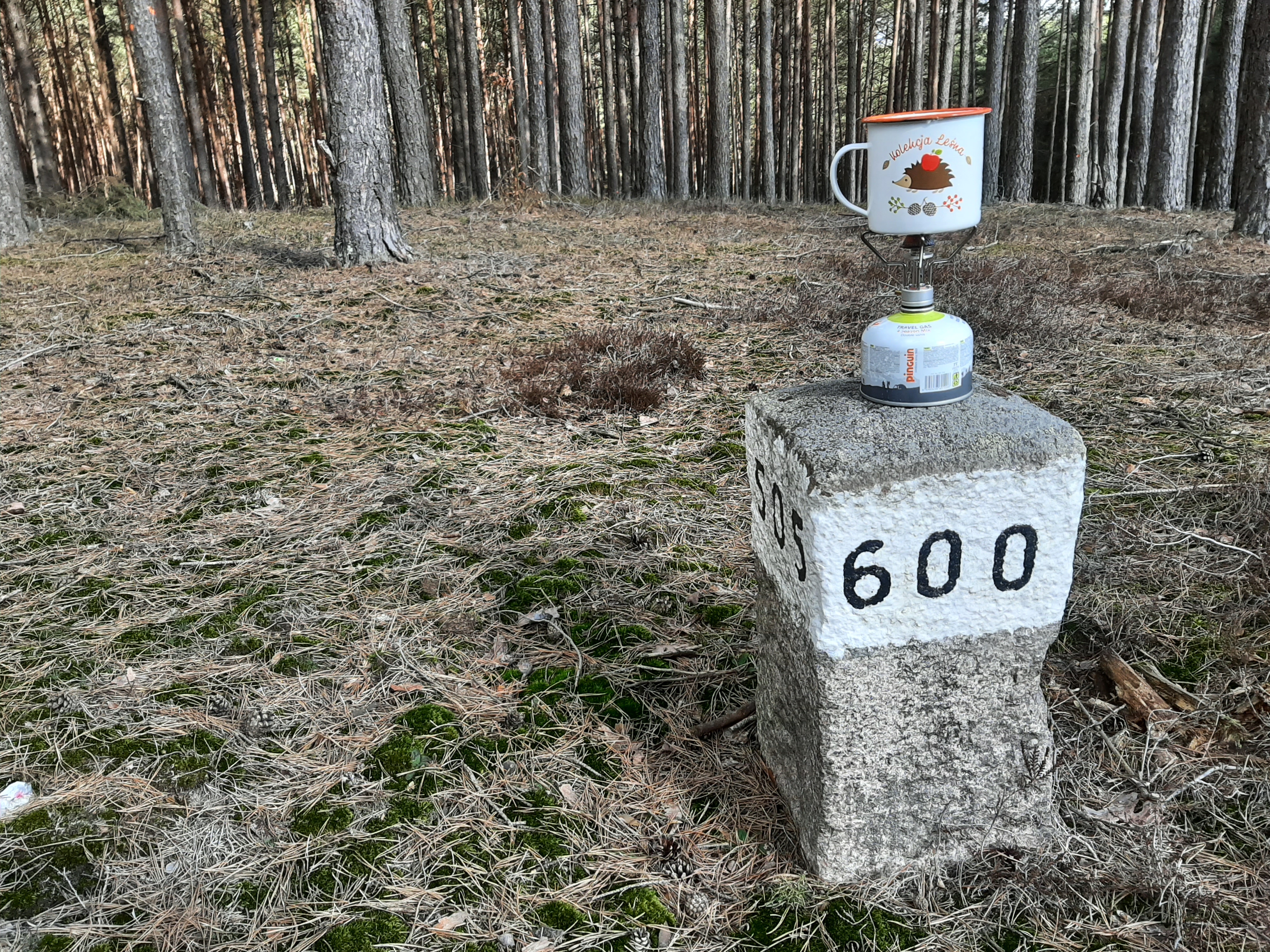
W razie jakichkolwiek pytań kontakt do koordynatora programu w nadleśnictwie: Monika Kwaśniewska: monika.kwasniewska@torun.lasy.gov.pl, 539 697 572 (preferowany kontakt mailowy)
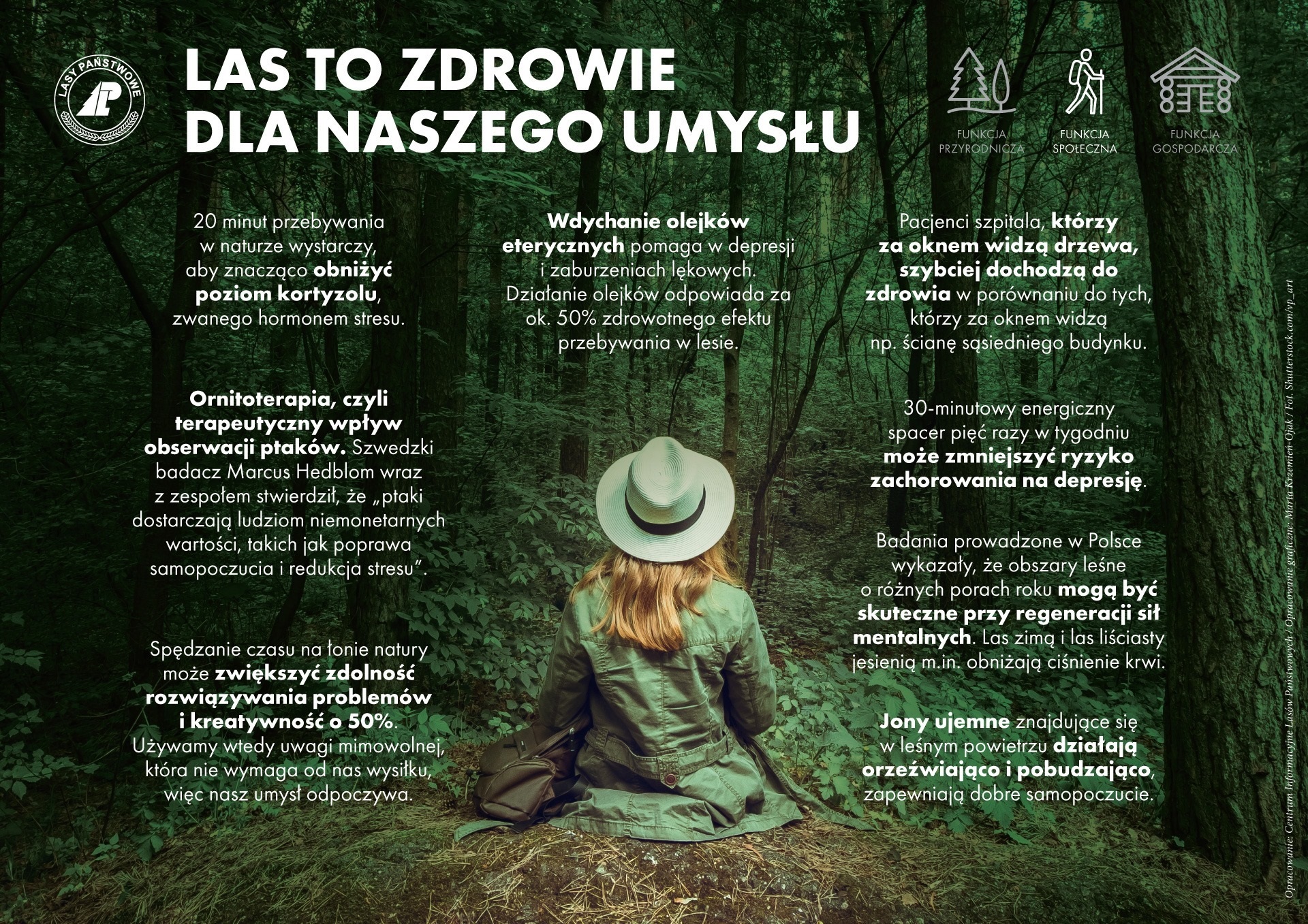
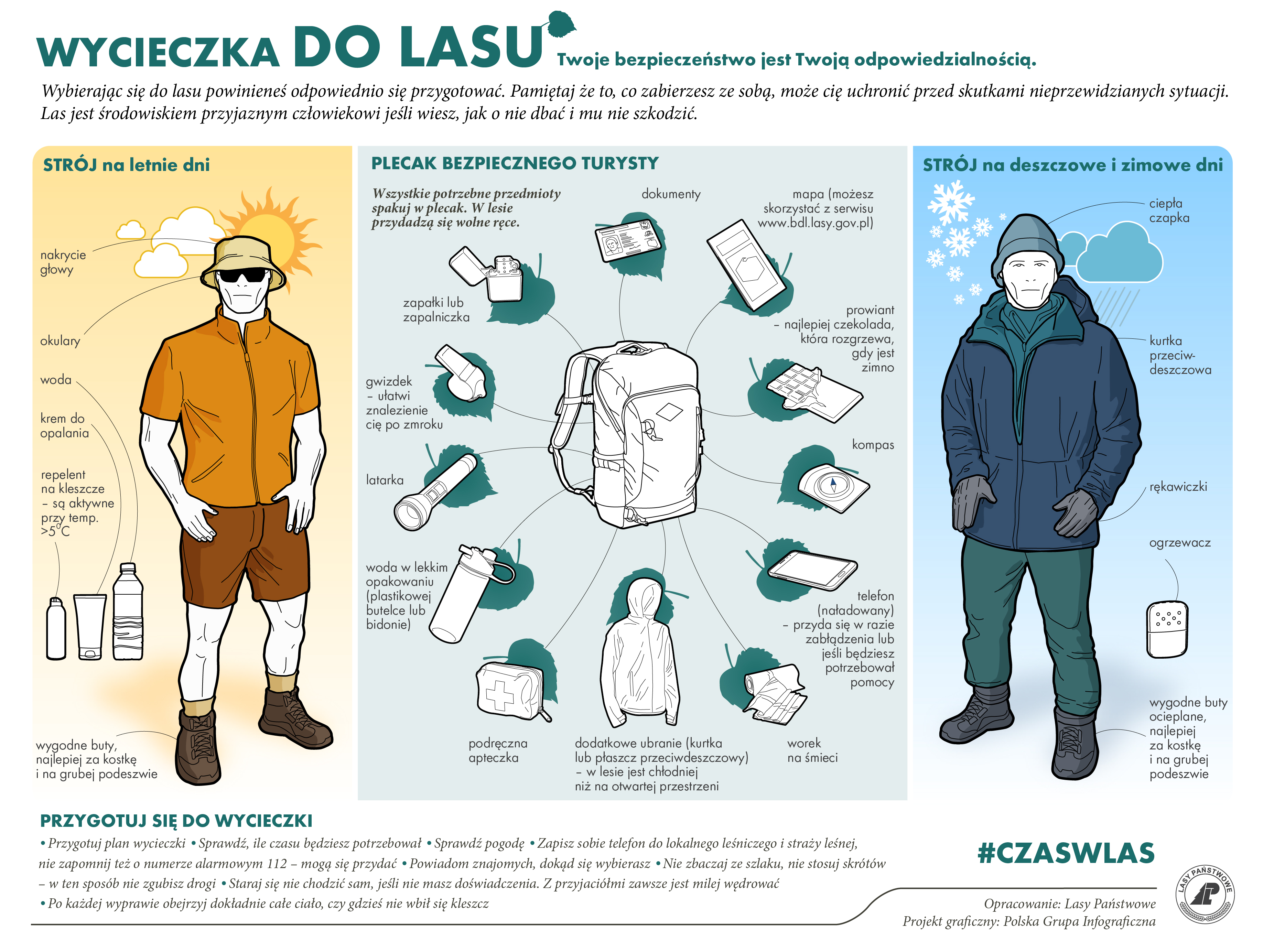


 fot. Paweł Fabijański
fot. Paweł Fabijański
 fot. Paweł Fabijański
fot. Paweł Fabijański
 fot. Paweł Fabijański
fot. Paweł Fabijański

